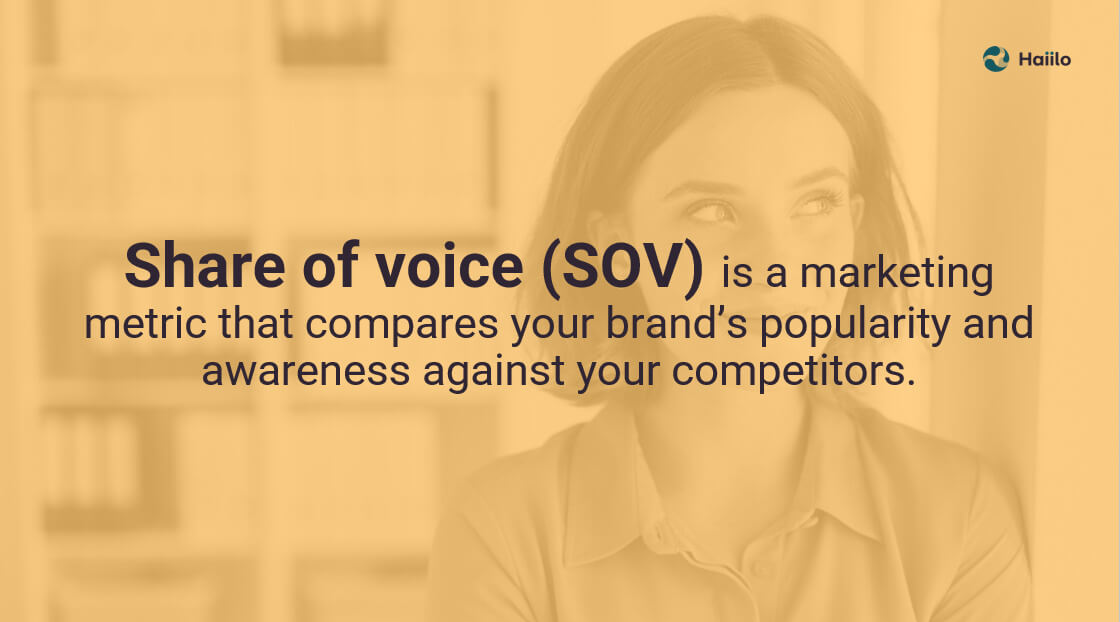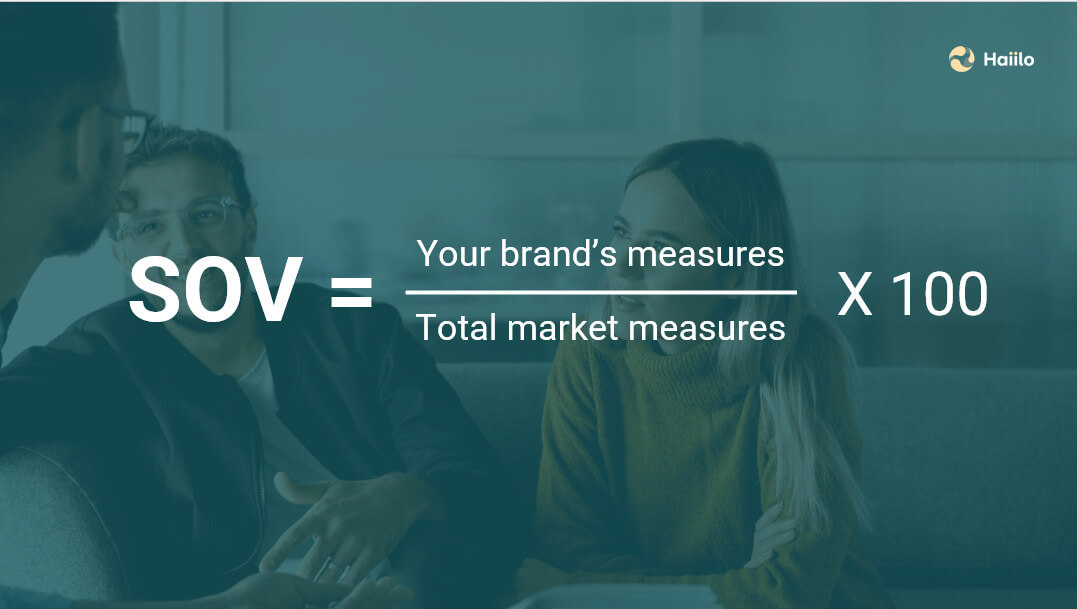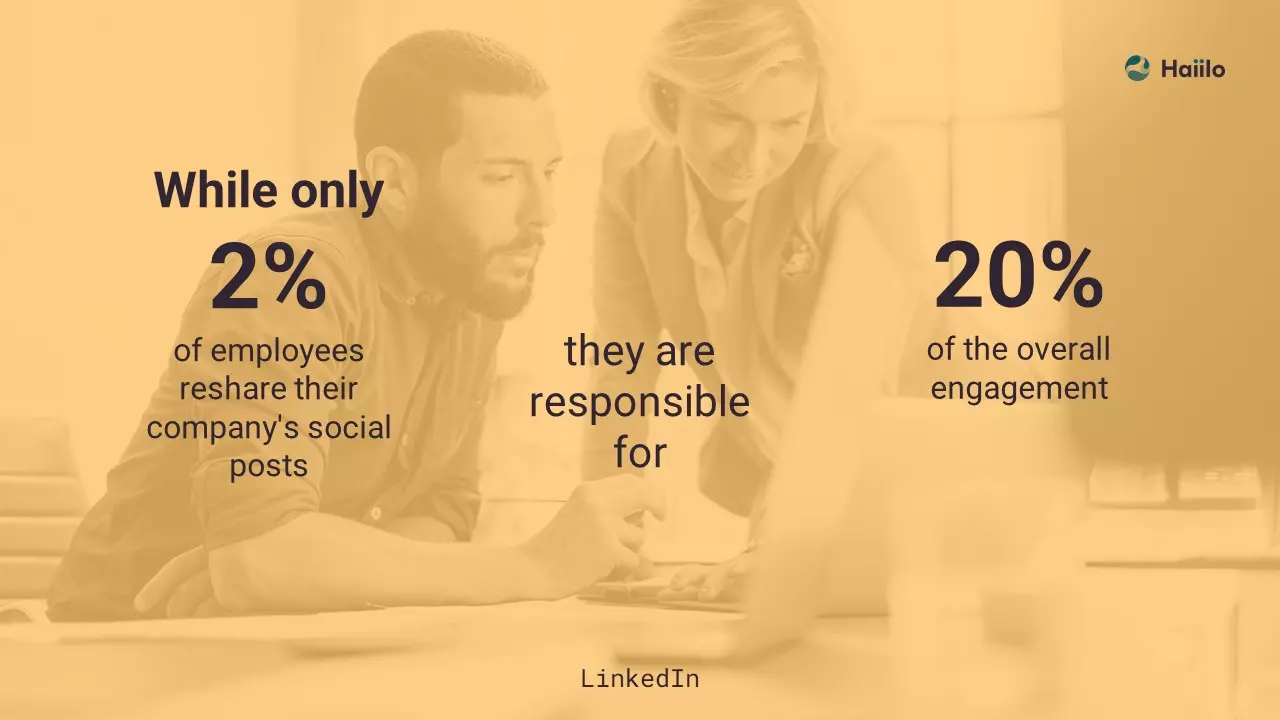What is your company’s share of voice? Why does it matter? How to measure it? What is one of the most efficient and cost-effective ways to improve it?
If you are looking for answers to some of these questions, keep reading because we will cover them all in this blog!

Benchmarking against competitors is, in general, a very powerful marketing technique that can help you discover your strengths and weaknesses and identify opportunities and threats for your brand in the market.
For example, suppose you know which keywords your competitors benefit most from. In that case, you should consider bidding on the same keyword clusters and invest more resources into content that focuses on those keywords. This way, you can gain more visibility for certain keywords relevant to your business and, consequently, increase the market share.
Similarly, if you can identify specific branded and non-branded hashtags that bring visibility to your competitors’ social media profiles, then consider experimenting with similar hashtags to increase the share of voice.
In general, measuring the share of voice is a great way to measure and improve the success of your paid marketing initiatives and organic results.

In other words, your SOV formula will depend on SOV metric you want to calculate.
🧮 For example, if your brand name appears online 20 times compared to 100 times of your competitors’ brand name, then you have an SOV of 20%.
(20/100)x100=20%

3. Keywords (organic and PPC)
Knowing which paid and organic keyword clusters bring the most traffic to your website is a powerful way to identify your company’s share of voice. These don’t necessarily need to be branded keywords but also keywords closely associated with your company’s products and services.
Don’t forget to use the reverse engineering methodology when identifying keywords relevant to your business. Meaning, do some competitive keyword research to identify keywords that bring the most value (traffic, conversions, sales,…) to your competitors.
4. Reach and impressions
If you are a performance marketer, these two metrics are probably critical to you. Whether you do paid social ads, Google Ads, or some other way to distribute your content, you will always want to understand how many people saw it.
Google also offers what’s called impression share. Impression share (IS) is the percentage of impressions your ads receive compared to the total number of impressions your ads could get.
🧮 Impression share = impressions / total eligible impressions

Impression share is a good way to understand whether your ads will reach more people if you increase your bid or budget.
5. Hashtags
In B2C and consumer goods industries, branded hashtags are very common on social media channels, particularly Instagram.
These branded hashtags are a powerful way to measure your voice share and understand your brand’s popularity on important marketing channels. Business profiles on social media also provide a way to drill down on hashtags and get valuable insights about your target audience.
These insights can help you identify the geographic, demographic, sociographic, and even behavioral characteristics of your target audience.
💡 If you are in B2B business looking to boost your marketing efforts on LinkedIn, check out our LinkedIn Marketing Guide.
📺 Also, don’t miss out our webinar: Engage employees–in the metaverse!
6. Customer’s voice
In the age of social media, one viral review can greatly impact your brand’s popularity. So delivering excellent experiences today is a must, not an option. According to Gartner research, 89% of companies will compete mainly on customer experience.
Customer voice can happen organically on the internet and as a word of mouth, or brands can collect it via designated customer surveys.
In any case, the customer’s voice is one of the ways to measure the share of voice, especially in an industry when rivalry is intense.
7. Influencer mentions
Influencer marketing is considered one of the most powerful marketing tactics in the B2C world. Micro and nano influencers have grown in popularity in the past few years as they bring more brand trust and credibility. According to research, 80% of consumers have purchased something via an influencer recommendation.


There’s already plenty of research that already proves how powerful employee advocacy can be. So throughout the past few years, organizations are becoming more aware of what they could achieve if their employees were acting as brand ambassadors. Take a look at these impressive statistics about how employee advocacy can boost your company’s share of voice:
- LinkedIn data showed that engaged employees influence 8x more Company Page views, 4x more Company Page followers, 7x more job views, and 4x more job applications.
- According to Entrepreneur, social media content shared by employees gets 8 times more engagement than content shared through the brand’s own social channels and is shared 25 times more frequently.
- Another research proved that 84% of people trust recommendations from people they know more than any other form of advertising.
- According to Kredible, on average, an employee advocacy program involving 1,000 active participants can generate $1,900,000 in advertising value.
- According to Hinge, 87% of employees recognized that employee advocacy contributed to expanding their professional network
In order to get the most out of advocacy initiatives, however, it is critical to provide your employees with the right set of tools and instructions. A social media policy can help them better understand best ambassadorship practices, and an employee advocacy platform can enable them to easily share your company’s content in a matter of seconds.
If you are looking to boost your company’s share of voice, schedule a Haiilo demo to see how employee advocacy can help!










in mind that the impact of your brand’s mention by an influencer with a million followers may be lower than a mention by a trusted nano influencer with a couple of thousands of followers.
8. Employee advocacy
Your employees can be your best brand advocates and big contributors to your brand’s share of voice. Employees’ share of voice on social media and other online channels can have a big impact on your organization’s sales, marketing, and HR performance.
To encourage your employees to be your brand advocates and engage in social selling, you need to implement a formal employee advocacy program. Keep reading the next section to learn more about this efficient yet cost-effective way to increase your company’s share brand recognition.